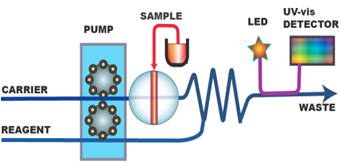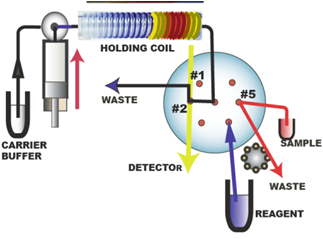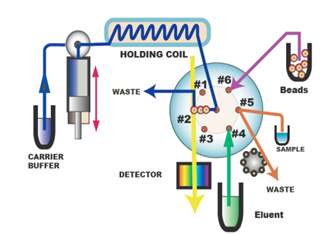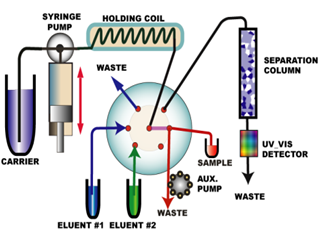0.1.3.
Flow Injection Techniques
Flow Injection Analysis (FIA) is group of a flow-based techniques
that has, over the last 30 years, brought speed, automated solution handling, miniaturization, and low cost to the analytical laboratory. Presently FIA techniques fall into four categories:
Flow Injection (FI)
Sequential Injection (SI),
Bead Injection (BI) and
Sequential Injection Chromatography (SIC).
FI is based in sample injection into a unidirectionally flowing carrier stream to which reagents are added at confluence points. In this way the concentration gradient is formed by dispersion of the sample zone alone, and the transient signal reflects the gradient of the sample zone, as it passes through the detector.
SI and BI are based on sequential injection of sample and reagents, into carrier stream, followed by flow reversal that promotes mutual dispersion of injected zones. The flow of the carrier stream is programmed, to optimize the assay protocol. While SI is designed to process liquids, BI uses suspensions of suitable materials in bead form to assemble columns with solid reagents or suitable ligands. SIC is emerging chromatographic technique that uses programmable flow to separate components, based on difference in migration velocities, on short columns.
The Lab-On-Valve, (LOV) format allows downscaling of SI and BI to the microliter range through integration and miniaturization.













